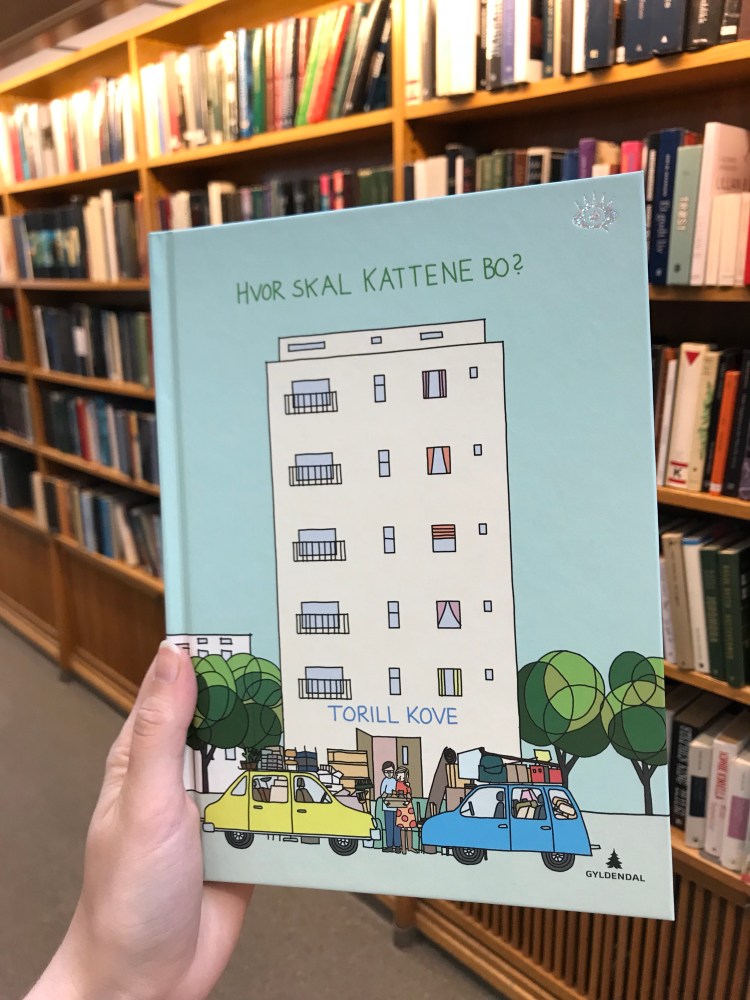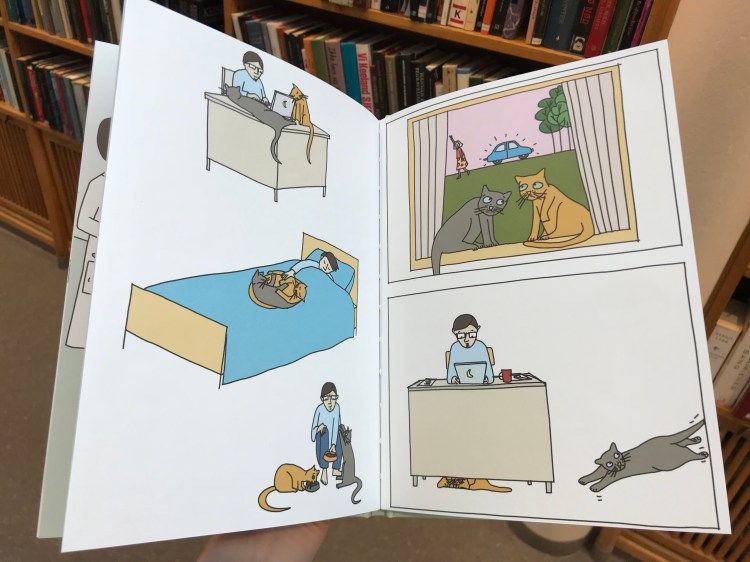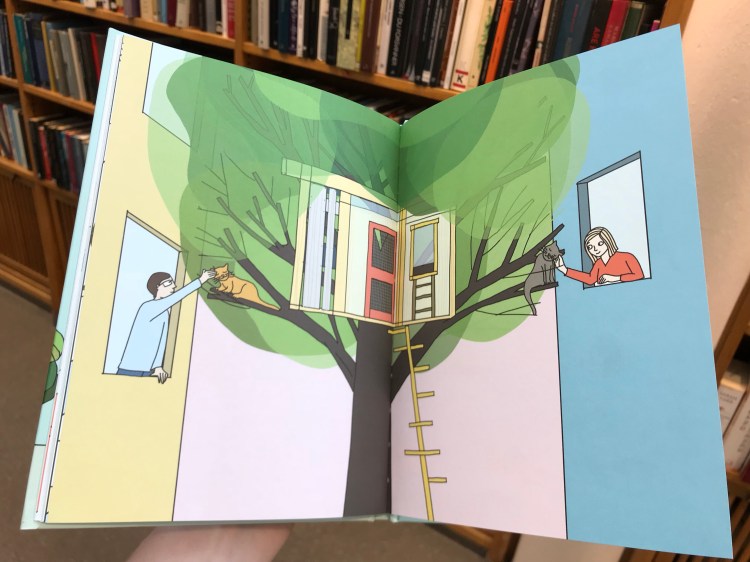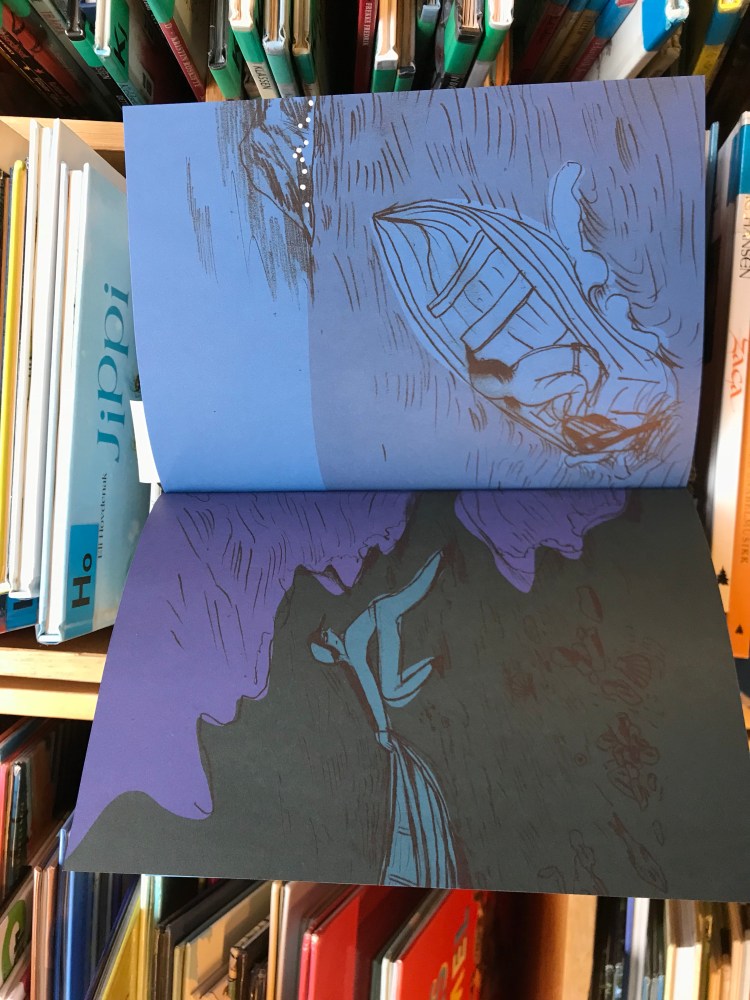It should come as no surprise to any reader of this blog, that I like words. I love reading, I’ve got a writing degree done and dusted, I attend poetry readings and sometimes perform my own work. I really like words, language and stories, and I talk a lot about them.
Another thing I talk a lot about, is the job I really like at the library. I love it because it lets me talk to a lot of people, I get to learn a lot of cool things, and it’s introduced me to books I never would have found on my own.
One type of book I’ve fallen completely in love with, I found when a lady came in and asked for “the book about the cats”. We should be able to find that, I said, there are lots of books written about cats, but no, she said, it’s not written. It’s just the book about the cats. I didn’t understand what she was looking for, however, the proper librarian who was also there, knew exactly what book the lady wanted.

Where Shall the Cats Live by Torill Kove. Published by Gyldendal in 2018, it is classified as a “wordless book”.



Wordless books have no words (as it says on the tin), and even though (as already mentioned) I love words, I’m so here for these books. On Gyldendal’s webpage, the publishers write that wordless books can be read both by those who love to read and those who struggle a bit more, but their purpose is to give kids who struggle with reading that feeling of having read an entire book all by themselves. This is because the wordless books aren’t read by reading the words, but by “reading the illustrations, discovering details, patterns, feelings and actions – solely by watching and understanding the visual cues; an ability our youngest readers already have.”
Yes, these books are absolutely wonderful for children. But the reason I fell in love with them is the wide audience they can appeal to. The illustrations in these books are colourful, vivid and vibrant, and not necessarily just for children. The book I’m running away by Mari Kanstad Johnsen, for example, is an example of a wordless book, that uses a darker style of imagery to maintain a vivid, emotional and thought-provoking nature.



In an interview with BOK365, Johnsen says that “I wanted to explore the possibilities that are hiding in a book without any text. I wanted the pictures to invite different readers to read different stories.”
This brings us back to the lady who wanted “the book about the cats”, again. She had moved to Norway from Sri Lanka a couple of years ago, and when her grandchildren came to visit, they made a game out of reading the wordless books together. How many different stories can we make out of these illustrations today? How many words can we point out in Norwegian and how many words can we name in Sinhala?
She said that sometimes she even read them on her own, just to practice using Norwegian in her head, without reading words off the page. Difficult, she said, but helpful.
To understand more about these wordless books and what they can offer, I read a study called “Using wordless books to stimulate language: Why, how and which ones?” In said study, language scientist Monica Melby-Lervåg points out that creating the stories on their own, helps build children’s understanding of narrative, which is an important part of understanding language and grammar, and also later, reading comprehension.” She also references another study, “Cognitive stimulation of pupils with Down syndrome: A study of inferential talk during book-sharing” done by Kari Anne Næss, Liv Inger Engevik and Mette Hagtvet, which states that reading wordless books is a great way to help children develop and use their vocabulary and to help them express themselves; they recognise what is happening in the illustrations and learn by putting their own words to what they’re seeing.
How wonderful is it that a little book of maybe 20 pages can be so valuable to such a wide and varied audience? This is a little niche market I had no idea existed up until a couple of months ago, and now I’m getting really into and interested in it. It is going to be interesting to see if these books manage to catch some ground in the Norwegian book market, and if there’ll be done more research on them in the future. And on the bright side, if the authors of books such as these have to branch out internationally to reach an even bigger audience, at least the translation costs won’t be breaking any banks!
What are your thoughts on wordless books? A little bit silly or really, really cool? It would be great to hear what you guys think about this!
Have a wonderful day,
-Andrea

Ceri
Wordless books are so important. There’s a really high illiteracy rating in my country and I think a picture can say a thousand words without actually saying anything. And I also love that language isn’t an issue. You could read a wordless book from the other side of the world and you’d still get the message. Love them. Love this post.
LikeLike
Valerie
This is a really intriguing genre, and it’s so cool how it can help people who struggle with reading for any number of reasons! It makes me think of an entirely different unconventional picture book, The Black Book of Colors. It’s black with white text with braille and texture illustrations that explain what colors are “like” without actually showing the color on the page. I guess the common element is that they both express something more through the act of taking something else away!
LikeLiked by 1 person
Andrea Wold Johansen
This is such a great comment! I haven’t heard about the black book of colours, but that sounds so interesting! Definitely checking that out! And your last point is lovely, I hadn’t thought about it like that, but yes, I guess they also express what you look at or focus on when you remove something. Thanks for reading! xx
LikeLiked by 1 person